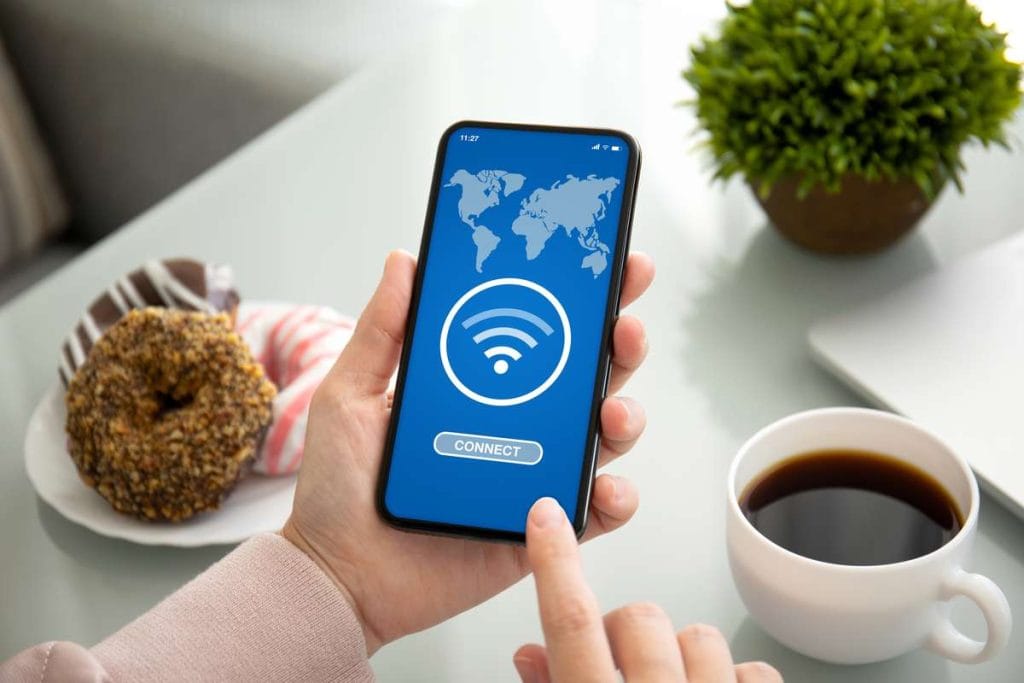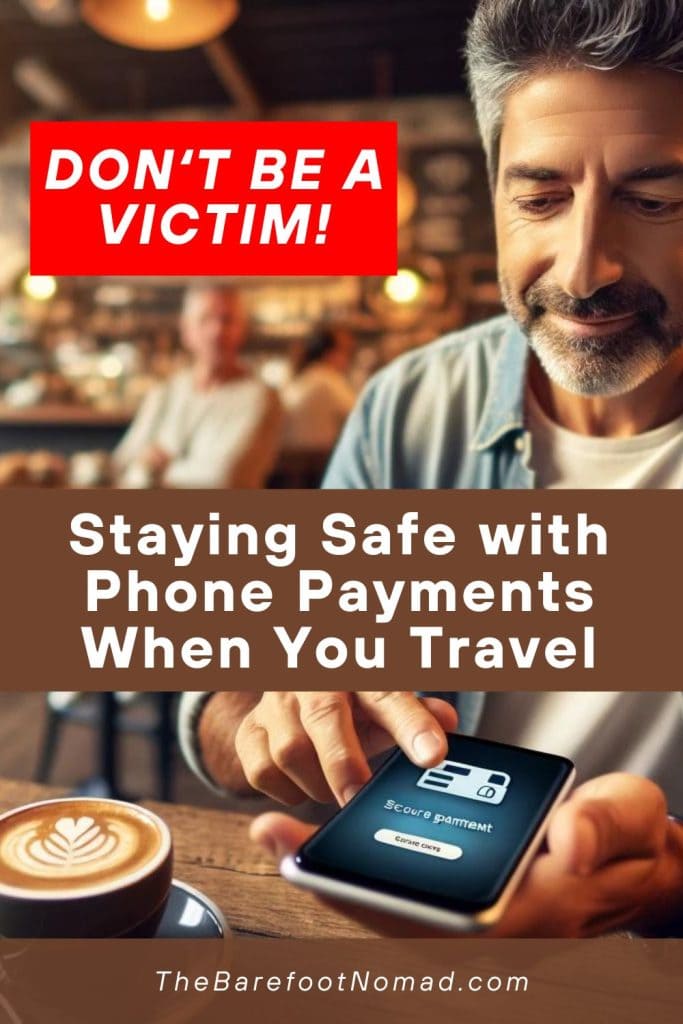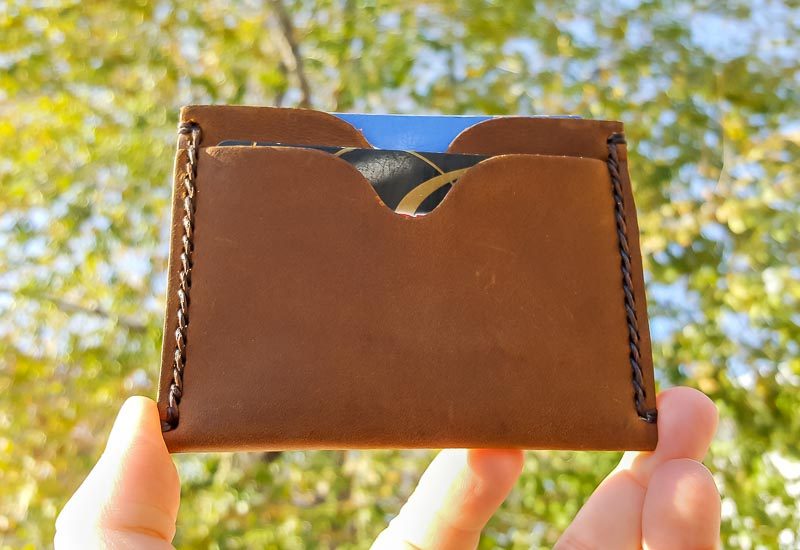
[ad_1]
Last updated:
Micki and I have learned a thing or two about keeping our mobile payments safe in the past 20 years of travel together.
Back in our first 10 years of travel, our security for mobile payments was as simple as hiding our credit card PIN from prying eyes when we paid at a local shop in Bangkok or Sydney. Other than hiding our PIN, keeping our passwords safe, and making sure that we used secure Wi-Fi networks, security wasn’t a huge part of travel for us back then.
Things have definitely changed in the past few years, with mobile payments popping up everywhere from farmer’s markets, to regular retail stores, to wide adoption of peer-to-peer mobile payments like Venmo. In the age of digital wallets and contactless payments, the convenience of mobile payments has become a travel essential.
Unfortunately, hackers and criminals have also gotten a lot better at stealing information, and skimming mobile payments as well. It seems that almost every time we talk to a friend who’s travelled overseas, they have some story about a credit card being compromised, losing their phone, or identity theft.
All of that means that travelers like us need to be more and more cautious when making mobile payments, whether we’re on vacation, on a road trip, or on a year-long around the world adventure.
What You Need To Know About Mobile Payment Security While Traveling
As a savvy traveler, understanding the nuances of mobile payment security is crucial. From strong passwords to Wi-Fi safety tips, let’s delve into some essential tips and tricks that we use to keep our transactions secure while globetrotting the world.
What are the Risks of Mobile Payments?
Mobile payments, while convenient, can make you susceptible to security risks like data breaches, unauthorized transactions, and identity theft.

How to Reduce Your Risk
There are four main ways to reduce your risk of becoming a victim. We’ll look at each of these in more detail later: 1) using Wi-Fi safely, 2) safeguarding mobile transactions, 3) securing your device, and 4) what to do if your device is lost or stolen.
On top of these four, having a backup payment method or two is a good idea, as is staying on top of cybersecurity risks on the road.
Use These Best Practices While Using Public Wi-Fi
Travel often means connecting to public Wi-Fi networks, which are prime spots for cybercriminals. These networks can often be unsecured and susceptible to prying eyes, allowing hackers to intercept payment information or other data that passes through the network.
Here are a few tips to keep you safe when using public Wi-Fi.
- Avoid Public Wi-Fi for Transactions: If possible, avoid using public Wi-Fi networks for financial transactions. If possible, use your mobile data instead, as it is typically more secure. Another option is using a private Wi-Fi device.
- Use a VPN: If you must use public Wi-Fi, use a Virtual Private Network (VPN). A VPN encrypts your internet connection, making it harder for hackers to intercept your data. Going with a VPN can help secure all your online transactions.
- Turn Off Automatic Connectivity: Disable features that automatically connect your device to available Wi-Fi networks. It’s an easy trick for hackers to clone known network names and skim your data when your device automatically connects to them (even without you opening your phone) so it’s best if you only allow automatic connectivity for your private, home networks that aren’t likely to be faked.

Securing Your Mobile Device
Here’s how we secure our devices when on the road.
- Use Strong Passwords and Biometrics: Start with the basics – ensure your device is locked with a strong password, PIN, or biometric authentication like fingerprint or facial recognition. Physically protecting your device is your first defense against unauthorized access.
- Keep Your Device Updated: Regularly update your device’s operating system and apps. Updates often include security patches that protect against newly discovered vulnerabilities. They can be a pain to do every other month, but it’s a small price for the added security. Besides, when was the last time you rebooted your device? It probably needs it anyway.
- Install a Reliable Security App: Consider installing a trusted security app that offers features like virus scanning, remote wiping, and location tracking in case your device is lost or stolen. Some phones have this built in already and it just needs to be enabled.

How to Safeguard Mobile Transactions
There’s a lot you can do to keep your identity and wallet safe when you’re making a mobile transaction. Here’s where to start.
- Use Trusted Payment Apps: Stick to well-known payment apps like Apple Pay, Google Pay, or those provided by your bank. These apps have robust security measures in place to protect your transactions and tie into your already secured device.
- Enable Two-Factor Authentication: Where possible, enable two-factor authentication (2FA) for your payment apps. 2FA adds an extra layer of security by requiring a second form of verification, such as a text message or email confirmation so even if someone managed to steal your password, it’s useless without the extra layer.
- Tip! If you’re planning to be outside of your cell plan area, ensure that the extra layer isn’t just SMS text as you likely won’t be able to receive texts outside of your service area.
- Monitor Your Accounts: Regularly check your bank and credit card statements for any unauthorized transactions, especially when traveling. Just don’t do it over a public Wi-Fi network.

Dealing with Lost or Stolen Devices
Losing your phone, or having it stolen, can be one of the biggest financial risks you take on vacation. Here’s what you can do to decrease the risk.
- Set up the Ability to Remotely Wipe Your Device: Be prepared for the worst. Know how to remotely lock and wipe your device if it gets lost or stolen. Both Android and iOS offer this feature and it quickly makes your device useless if someone manages to get into it. It also means selling it won’t profit them as the device can’t easily be wiped. If everyone did that, it would discourage people from even attempting it in the first place.
- Contact Your Bank Immediately: If your device is lost or stolen, contact your bank or the service provider of your digital wallet immediately to prevent unauthorized transactions. While it’s best to contact the bank first, it’s also not a bad idea to remove any cards attached to a digital wallet just to be doubly safe.
Travel Smart with Backup Payment Methods
While mobile payments are convenient, always have a backup. We always carry a small amount of local currency and an emergency credit card stored separately from our mobile devices. This ensures we’re not left stranded in case of a lost or stolen device or technical issues with your mobile payment app.
We always travel with a bit of emergency money (both in the local currency, and USD) for this exact reason. We’ve been locked out of credit cards and have seen entire ATM infrastructures go down in some towns for a day at a time.
Have enough with you to get a taxi where you need to go, a simple meal and even a place to sleep for the night if you’re moving from one location to another. Carrying too much is just a security risk, so don’t overdo it.

Staying Informed and Updated
Stay informed about the latest security threats and updates in the world of mobile payments. To do this, you can follow tech blogs, national security centers, subscribe to newsletters from your bank or payment service providers, and participate in online forums dedicated to digital security. As the old adage goes, the more you know…
A Last Word on Mobile Payment Security While You Travel
Mobile payments can make traveling a breeze these days, but it’s essential to stay vigilant about security.
By adhering to most of these mobile security tips, you can enjoy the convenience of mobile payments without compromising your financial safety.
Remember, the key to secure mobile payments while traveling lies in being prepared, informed, and aware of the potential risks. Safe travels and happy spending!
[ad_2]





